The problem with frames (framing the problem): it’s a man’s, man’s, man’s world
Posted on November 12, 2018 “Misogyny, when expressed or explored by men, remains a timeless classic.”
― Maggie Nelson, The Art of Cruelty: A Reckoning
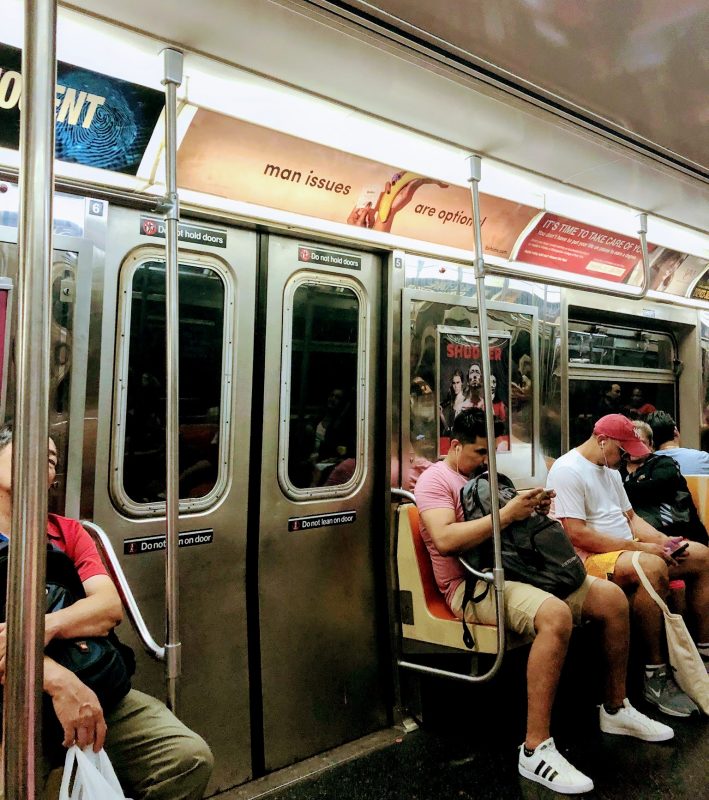
Hims advertisement. Photo: L. Western
I’m tired. For most of the world, and for the World itself, ‘man issues’ are not optional.
I’m not interested in using this space to expand upon female suffering in a series of statistics, data that is produced with diligence and admirable intention by institutions worldwide. Yes, women and girls slice[1] their arms and thighs with razors, deprive themselves of nutrition,[2] enacting upon their bodies the violence that they have intuited or observed the world is promising them – or wherein they identify reward and safety. Yes, they are killed by lovers[3] (funny word), and raped as part of campaigns of war.[4] Yes, they flee countries where their bodies are mutilated in gendered rituals of initiation and control, prepared to become reproductive property,[5] and they cross borders, babies on hips, fleeing drought.[6] These women and their plights have been rendered as numbers frequently enough, have been named “victim” and “survivor.” And maybe the stacks of data they become does something, maybe it motivates small increases in relief funding, or educational funding, slow shifts in power… But all those numbers are frames for what has already transpired, privileging the aftermath and identifying the problem with the victim. And this is dangerous, eliding cause, negating specificity, and minimizing the possibility of radical (as in root) change by inadequately locating the source of these problems.
Frames signal where a problem exists and suggest what might be involved in solving it. They amplify, direct, and define actions and goals.[7] There is nothing neutral about a frame.
Too often in the US, acts of horrific violence are made singular, specific. Depending on the race and class of the perpetrator, the story of the lone shooter is plumbed for childhood trauma or extremist religious belief, for the moment of rupture that separates before from after, him from us. His mother was negligent; he was rejected by a girlfriend; he was closeted or fired or bipolar… The larger connections, the larger webs that bring violent perpetrators into communion with one another – and us – are not allowed to gather force. Collectively, we pivot quickly away from the he-ness. To shift the frame to men, to masculinity, is too confronting, uncomfortable, impolite and demanding. There is truth to specificity, and yet “…we agree there is rampant misogyny, but misogynists are nowhere to be found; homophobia is a problem, but no one is homophobic.” [8] When we don’t name a thing fully, it has no location and therefore cannot be grasped and re-formed, re-designed.
Misogyny, homophobia, racism all become something like ghosts that we chase through a house, slipping through our fingers as we exclaim over the flickering of a ceiling lamp. If the nature, the commonalities of source, of each unique incident are not adequately framed, they are granted evanescence. The perpetrator is allowed a personality which explains away commonalities of race and gender: “Jimmy is just rude and immature – he’s not (fill in the blank: racist, misogynist, etc.).” White privilege remains supreme. Misogyny gets a hall pass. Whoever experiences or witnesses the incident is meant to let it slide, to minimize its contributions to a grim avalanche. Seeing and responding to the systemic implications of granular behavior is emphatically discouraged and the real work of an encounter with violence falls, over and over, on those classes who suffer it and never those classes who commit it or who are implicated by demographic kinship in the commission. The burden – and the reward – of repair and growth remains squarely with victims.
This is no way for us to go on. To ameliorate suffering, it must be stanched at the source. While misogyny can be perpetrated by any gender, just as intra-group racism exists, perpetuating and reinforcing damage, embodied masculinity is both the immediate tool and greatest beneficiary of most of the world’s violence. To borrow language from philosopher Bruno Latour, masculinity is ripe for a “relooking,”[9] That is to say: it’s a design opportunity.
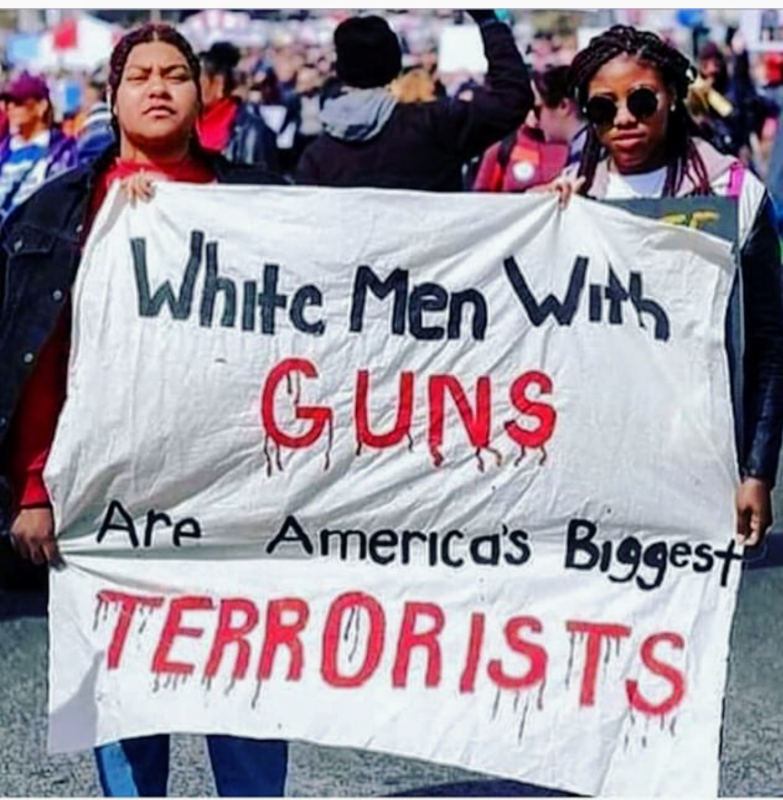
Reframing and locating a problem. Photo: @msgruaer
Latour, in his examination of the field of design and the work of Peter Sloterdijk, frames qualities that may give us insight into the ways in which design is uniquely advantaged to grapple with hegemonic masculinity and its human and ecological expense as the basis for our prevailing systems of economy, government, and relationship.
The concept of hegemonic masculinity is defined as the practice of legitimizing the social dominance of men, and delineates a concomitant masculine ideal. Psychiatrist Terry Kuper explains: “In contemporary American and European culture, [hegemonic masculinity] serves as the standard upon which the “real man” is defined. …contemporary hegemonic masculinity is built on two legs, domination of women and a hierarchy of intermale dominance. It is also shaped to a significant extent by the stigmatization of homosexuality. Hegemonic masculinity is the stereotypic notion of masculinity that shapes the socialization and aspirations of young males. Today’s hegemonic masculinity in the United States of America and Europe includes a high degree of ruthless competition, an inability to express emotions other than anger, an unwillingness to admit weakness or dependency, devaluation of women and all feminine attributes in men, homophobia, and so forth.” [10] [11] Hegemonic masculinity, and its emphasis on domination, is the form of masculinity which all others are positioned in relation to. The subjugation of the non-male, of interdependence, to this masculine ideal founds many of our world’s mechanisms for violence and exploitation. It doesn’t take much imagination to understand how such practices might easily extend beyond the interpersonal to also inform individual, institutional, and national relationships with the ecological feminine, our “Mother” Earth.

Kudzu, an invasive species, dominates the landscape. Photo: Kerry Britton/U.S. Forest Service/USDA/flickr
For these reasons, we need to see masculinity, as a cultural practice, grow in comprehension, though not in extension. [12] The reach of masculinity is wider than it ought to be, it has spread its logics and imperatives like kudzu into terrain that cannot support its unidirectional thrust. It is depleting the systems upon which it is reliant for continuance. It’s comprehension, however, the nuance of what comprises its definition and practice, is constricted and in desperate need of cultivation. Masculinity is an obelisk, not a nosegay, and why? Where is the poetry and petal in modern manhood and its bulky, rigid, accretive structures and institutions? We have rage, domination, accumulation, whether these things are demonstrated through bodily force, verbal force, or the forces of law, technology, economics, and politics. Such a limited palette has done more than its fair share in shuttling us to the precipice of violent conflict and environmental collapse. (Framing whiteness could also serve to legitimately reveal a twinned source of violence).
What does design have to offer? Latour’s conception of design posits it as inherently aesthetic, remedial, transitory, ethical, and imbued with humility. As such, design can be understood to stand in opposition to the aggression and dominion of not only hegemonic masculinity, but also whiteness, capitalism, imperialism, and colonialism.
Ethics is explicit: “To design something… allows us to raise not only semiotic questions of meaning but also the normative question of good and bad design.” [13] In the idea of remediation, a conquering attitude is absent; the extant is a point of initiation. Humility, (from the Latin humus for ground and humilis or lowly),[14] is a display that disavows an unfettered masculine concept, aligning the actor with earthiness and a form of voluntary restraint. It is the supplicant’s word, rich with devotion, and the modesty (modestus: sober, gentle, keeping due measure)[15] of identifying and coupling with ignorance as a tool for learning.
The idea that design communicates aesthetically, meaning through the senses, calls forth the value of the body as our locus of meaning, a value which is amplified by the transience that Latour identifies. As an asset of design, transience aligns the field squarely with the vital instability of the feminine. The female body is defined by its cyclical capacity for change. To be female is to embody transformation and adaptation as a part of your corporeal definition. Menstruation, pregnancy, menopause: the cis-female body is dynamic in ways that are dramatic, inconvenient, necessary. To have a womb is to be implicated in multiplicity, whether a child ever gestates there or not. After all, all the eggs a woman will ever have are present embryonically, as she swims, enveloped by her mother’s body. The dynamic ecosystem of a cis-female body references, forward and back, all the generations of her heritage.

Sonogram image of enveloped fetus. Photo: Ryan Christie
This subtle and implicit alignment of design with the feminine may seem forced, however, it is important to acknowledge Latour’s knowingness with language. His point of departure is double: a playful unspooling of the implications of the French word for design (concevoir, to look again, but also: to conceive) becomes explicit with the envelopes of life support – spaces of hybridity and coexistence – that appear in the work of philosopher Peter Sloterdijk. For Sloterdijk, “humans are to be handled with infinite precaution from the womb… in which they are grown (Sloterdijk defines philosophy as a kind of obstetrics!) all the way to the place where they survive and die.”[16]
These envelopes directly reference the maternal body, but also identify and replicate the body (or at least the mammalian body) more generally. Pleura contain our lungs, the pericardium encases our heart, periosteum envelopes our bones and the peritoneum lines our abdominal cavities, cradling our viscera. More than that, every individual cell is wrapped in its own tiny membranous sac, gossamer like, its fragility resisting touch and, until recently, definition.
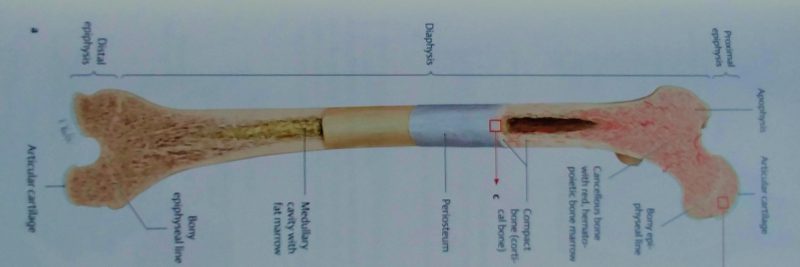
Periosteum of femur, visualized in white. Thieme Atlas of Anatomy. Photo: A. Hansen
Envelopes, Latour argues, delineate a space for unification, a place where freedoms are accessible because of, and not in defiance to, dependence.[17] The amniotic sac cushions a fetus; the pleura allow the lungs to glide in the thorax during respiration. Envelopes form the protective conditions for life, “we are never outside without having recreated another more artificial, more fragile, more engineered envelope. We move from envelopes to envelopes, from folds to folds, never from one private sphere to the Great Outside.”[18] This series of inescapable envelopes defies the masculine ideal of independence, and asserts a sort of perpetual residence in utero, making explicit our fragility and reliant character. The envelope frames our “life supports,” and, by demanding explication, makes visible our dependence, underscoring what cannot be taken for granted.[19]
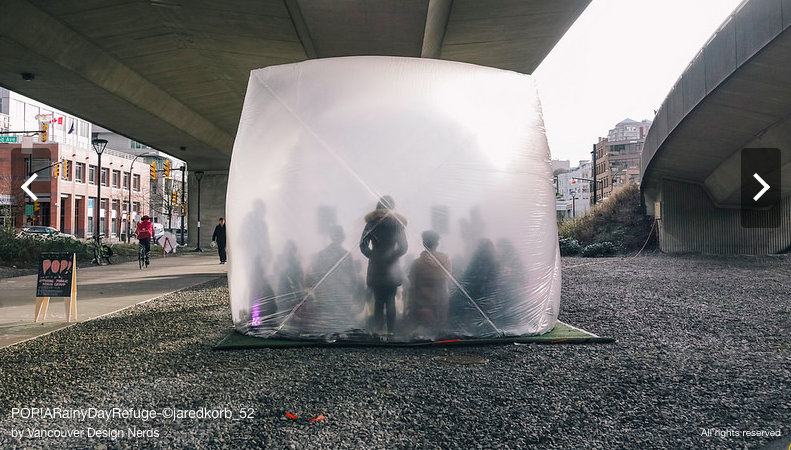
The Vancouver Bubble. Photo courtesy: N. Tillen
“It is easier to tell a story of how people wound one another than of what binds them together.”
― Anne Carson, Plainwater: Essays and Poetry
Change demands change. In the case of taking hegemonic masculinity on as a design opportunity, some will struggle with “…the difficulties that will entangle us every time we must modify the practical details of our material existence.”[20] There will be loss. The burden of practical life may feel more burdensome for some, before the benefits of entering a new envelope are palpable. Some “collaborators” in this sea change may be “not all visible, welcomed, or willing.”[21]
But, no matter. An unchecked malignancy is cancer. We must find, create, and draw into relief conditions of envelopment that redefine such difficulties, losses, and modifications as the humus from which rises future flourishing.
Through careful engagement, we must confront and frame masculinity through both its “intrinsic materiality” – the body – and “through its more aesthetic or “symbolic” aspects.”[22] How does one design, or redesign, an embodiment, from which symbolism flows? Is this a matter of creating objects or of reframing notions of self, practices of relationship, and the channels through which experience is accrued? To recompose masculinity is, most essentially, to create a new relationship to one’s body. Is there a reciprocal recomposition of femininity that must necessarily follow?
In which moments does this design opportunity present itself and to whom? Whose project is this? Is it mine, a cis-woman who chafes under the pervasive and often dismissed impact hegemonic masculinity has on my life? Or ought masculinity be addressed by the masculine designers who are implicated in and limited by it? Or – more likely – is this a project that demands all-hands on deck, rendering both conflict and collaboration fertile in a tussle against personal and ecological death?
Opportunities to design the obsolescence of hegemonic masculinity present themselves daily. The emergency is now.[23] What needs to happen for this frame to be fitted?
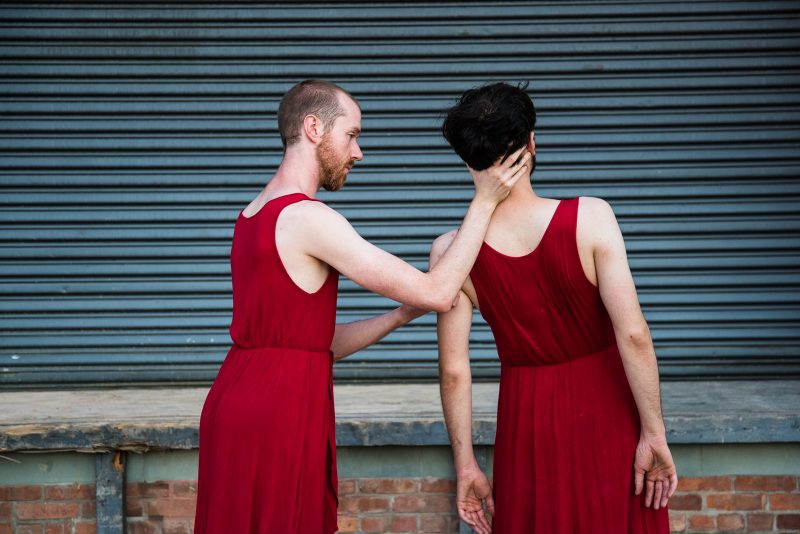
Masculine sensitivity. Dancers A. Selden & S. Hanson. Photo: Matt Harvey
-AH
Bibliography
- How Many Teenage Girls Deliberately Harm Themselves, by Emily Baumgaertner, The New York Times, July 2, 2018.
- Eating Disorder Statistics 2017, by Justin James, Adolescent Growth, August 8, 2017
- National Statistics, National Coalition Against Domestic Violence.
- Infographic: Rape in war, by the numbers, by Lauren Wolfe, Women’s Media Center, January 9, 2015.
- Female Genital Mutilation, World Health Organization.
- Climate change ‘impacts women more than men,’ Mary Halton, BBC News, March 8, 2018.
- Thinking In Systems: A Primer, by Donella H. Meadows, edited by Diana Wright. Sustainability Institute, 2008. 138
- The White Savior Industrial Complex, Known and Strange Things, by Teju Cole, Random House, NYC. 2016. Pg. 342
- A Cautious Prometheus? A Few Steps Toward a Philosophy of Design with Special Attention to Peter Sloterdijk, chapter by Bruno Latour, In Media Res: Peter Sloterdijk’s Spherological Poetics of Being, ed. Schinkel & Noordgraaf-Eelens, Amsterdam University Press, 2011. Pg. 151
- Hegemonic Masculinity, Wikipedia.
- Program Faculty, The Wright Institute.
- A Cautious Prometheus? A Few Steps Toward a Philosophy of Design with Special Attention to Peter Sloterdijk, chapter by Bruno Latour, In Media Res: Peter Sloterdijk’s Spherological Poetics of Being, ed. Schinkel & Noordgraaf-Eelens, Amsterdam University Press, 2011. Pg 152
- A Cautious Prometheus? A Few Steps Toward a Philosophy of Design with Special Attention to Peter Sloterdijk, chapter by Bruno Latour, In Media Res: Peter Sloterdijk’s Spherological Poetics of Being, ed. Schinkel & Noordgraaf-Eelens, Amsterdam University Press, 2011. Pg. 161
- Humility, Wiktionary.
- Modesty,Online Etymology Dictionary.
- A Cautious Prometheus? A Few Steps Toward a Philosophy of Design with Special Attention to Peter Sloterdijk, chapter by Bruno Latour, In Media Res: Peter Sloterdijk’s Spherological Poetics of Being, ed. Schinkel & Noordgraaf-Eelens, Amsterdam University Press, 2011. Pg 158
- A Cautious Prometheus? A Few Steps Toward a Philosophy of Design with Special Attention to Peter Sloterdijk, chapter by Bruno Latour, In Media Res: Peter Sloterdijk’s Spherological Poetics of Being, ed. Schinkel & Noordgraaf-Eelens, Amsterdam University Press, 2011. Pg. 158
- A Cautious Prometheus? A Few Steps Toward a Philosophy of Design with Special Attention to Peter Sloterdijk, chapter by Bruno Latour, In Media Res: Peter Sloterdijk’s Spherological Poetics of Being, ed. Schinkel & Noordgraaf-Eelens, Amsterdam University Press, 2011. Pg. 159
- A Cautious Prometheus? A Few Steps Toward a Philosophy of Design with Special Attention to Peter Sloterdijk, chapter by Bruno Latour, In Media Res: Peter Sloterdijk’s Spherological Poetics of Being, ed. Schinkel & Noordgraaf-Eelens, Amsterdam University Press, 2011. Pg. 159
- A Cautious Prometheus? A Few Steps Toward a Philosophy of Design with Special Attention to Peter Sloterdijk, chapter by Bruno Latour, In Media Res: Peter Sloterdijk’s Spherological Poetics of Being, ed. Schinkel & Noordgraaf-Eelens, Amsterdam University Press, 2011. Pg. 162
- A Cautious Prometheus? A Few Steps Toward a Philosophy of Design with Special Attention to Peter Sloterdijk, chapter by Bruno Latour, In Media Res: Peter Sloterdijk’s Spherological Poetics of Being, ed. Schinkel & Noordgraaf-Eelens, Amsterdam University Press, 2011. Pg. 156
- A Cautious Prometheus? A Few Steps Toward a Philosophy of Design with Special Attention to Peter Sloterdijk, chapter by Bruno Latour, In Media Res: Peter Sloterdijk’s Spherological Poetics of Being, ed. Schinkel & Noordgraaf-Eelens, Amsterdam University Press, 2011. Pg. 151
- Special Climate Report: 1.5 ºC Is Possible But Requires Unprecedented and Urgent Action, UN Sustainable Development Blog, October 8, 2018.